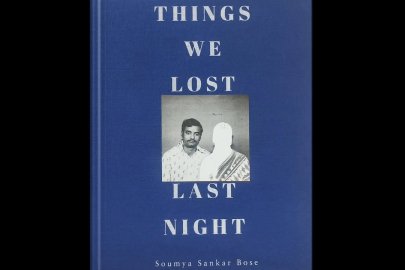Category
Published
Eating and drinking in Senegambia over time: historical perspectives
Mor Ndao
It is accepted that food and nutritional problems are, in fact, the result of a complex situation in which several factors interact: climatic hazards, eating habits, socio-cultural considerations, health problems and living standards.

- J.P Aron gives a perfect illustration of this when he writes: ‘A fact of culture, food is also a biological fact. As a result, medical-physiological analysis in its early days took shape on the complex horizon of a common ground where the chemical phenomena of digestion rub shoulders not only with culinary recipes and gastronomic reveries, but also with moral or moralistic observations"[1]. Generally speaking, traditional diets are a function of resources and, even if they do not always meet all needs, they reflect an adaptation to the environment.
- An analysis of general dietary conditions in Senegal shows the predominance of a diet dominated by cereals and fluctuating seasonal rhythms, with alternating periods of abundance followed by periods of shortages and lean periods marked by seasonal vitamin deficiencies.
- The food and nutrition situation is subject to an annual cycle and seasonal variations marked by very low energy cover during the rainy season. Moreover, food consumption is at its lowest in the middle of the rainy season (August and September). This phenomenon, which is more pronounced in rural than in urban areas, puts young children, the prime targets of malnutrition, at greater risk.
- The establishment of dependency structures under colonisation, with the introduction of cash crops, particularly groundnuts, inevitably led to dysfunctions in the local food system. From the 19th century onwards, Senegal's economic space was largely shaped, indeed defined, by the colonial system (Mbodj M., 1992, p.97). Indeed, ‘at that time, France had unified natural regions and traditional political areas which already had similarities between them and which, above all, maintained more or less regular economic relations, into a territorial unit known as Senegal’ (Mbodj M, 1992, p. 97).
- The abolition of the slave trade was followed by the introduction of a policy of agricultural ‘development’ based on cash crops (indigo-cotton and especially groundnuts). After the failure of the agricultural colonisation experiment (1817-1833) in the Senegal delta (Bathily A., 1991, p.60), the colonial regime attached capital importance to groundnut production in the upper valley. The extension and relocation of the groundnut basin from the second half of the 20th century onwards, the monetarisation of the economy and the tax system imposed by the colonial administration forced farmers to start growing groundnuts (Ndao M., 2015, p. 51).
- Based on this observation, this study attempts to answer the following questions: Through what mechanisms did the colonial system, thanks to groundnut cultivation, gradually place Senegal in the process of food dependence? What are the changes in food tastes and behaviour? What role did the outside world play in the emergence of new diets?
- Bibliography
- Amin, S. (1971). West Africa blocked. L'économie politique de la colonisation 1880-1970, Paris, édit. De minuit, 324p.
- Bathily, A. (1991). ‘Evolution économique et transformations des habitudes alimentaires en Afrique’ in Les changements des habitudes et des politiques alimentaires en Afrique : Aspect des sciences humaines, naturelle et sociales, under the direction of Igor de Garine, éditions Publisud, Paris, 278p. pp 55-62.
- Bergouniou J-L. (1951) ‘Malnutrition et sous nutrition à Kaolack et Fatick (Sénégal) Nourrissons et jeunes enfants de Zéro à 4 ans’ in Bulletin Médical de l'A0F, T.VIII, pp.213-214.
- Claudian J. (1954). ‘L'évolution de l'alimentation humaine’ in Manuel élémentaire d'alimentation humaine: bases biochimiques, physiologiques et psychologiques de l'alimentation T.1, edited by Trémoliéres J., Serville Y., Jacquot R., éd. Sociales françaises, 263 p.
- Fatemeh Y.E. (2003). ‘Les problèmes alimentaires dans la région Soudano-sahélienne de l'Afrique Occidentale, les cas du Burkina Faso, du Mali, du Niger et du Sénégal’, PhD thesis in Geography, Univ. Michel de Montaigne Bordeaux III, 407p.
- Lombard J. (1993). Riz des villes, mil des champs en pays sérère-Sénégal, CEG ET, Collection Espaces tropicaux, n°6, Talence, 228 p.
- Manga I. (2011). L'administration coloniale et la lutte contre la malnutrition au Sénégal : le cas de l'O.R.A.N.A. (1952 c .a .1966), Master's thesis in history, Université Cheikh Anta Diop de Dakar,153p.
- Mbodj M. (1975). ’ Le Sine Saloum de 1914 à 1929 : le développement de l'arachide et mutations sociales ’ Mémoire de Maitrise d'histoire, Université de Dakar, 218 p.
- Ndao M. (2015). L'alimentation et la Santé des enfants dans le Sénégal colonial ,1905- c.a. 1960, L'harmattan, Sénégal, 2015,483 p.
- Ndao M., ‘ La malnutrition infantile : le cas du Sénégal 1930 - 1960 ’, in, Annales de la Faculté des Lettres et Sciences Humaines, Dakar FLSH, no 34, 2005, pp. 107 - 128.
- Palmeri P. (1995). Retour dans un village Diola de Casamance, chronique d'une recherche anthropologique au Sénégal, Paris, l'harmattan, Connaissance des hommes,398 p.
- Pélissier P. (1966). Les paysans du Sénégal-Les civilisations agraires du Cayor à la
- Casamance-Saint-Yriéis,941p
- Raoult, A. (1957). Répartition géographique et incidence du Kwashiorkor en AOF, Dkr, ORANA, C.4, 16p.
- Savané M. A. (1992). Population et gouvernements face aux problèmes alimentaires :
- regards sur des zones de l'Afrique de l'Ouest, éditions Genève, UNRISD, 389 p
[1]. Aron (J.P) 1961, ‘ Biologie et alimentation au XVIIIe siècle et au début du XIXe siècle ’ in Annales No 3 mai juin1961. Enquêtes ouverts, Bulletin No 1 ; pp 971-976










